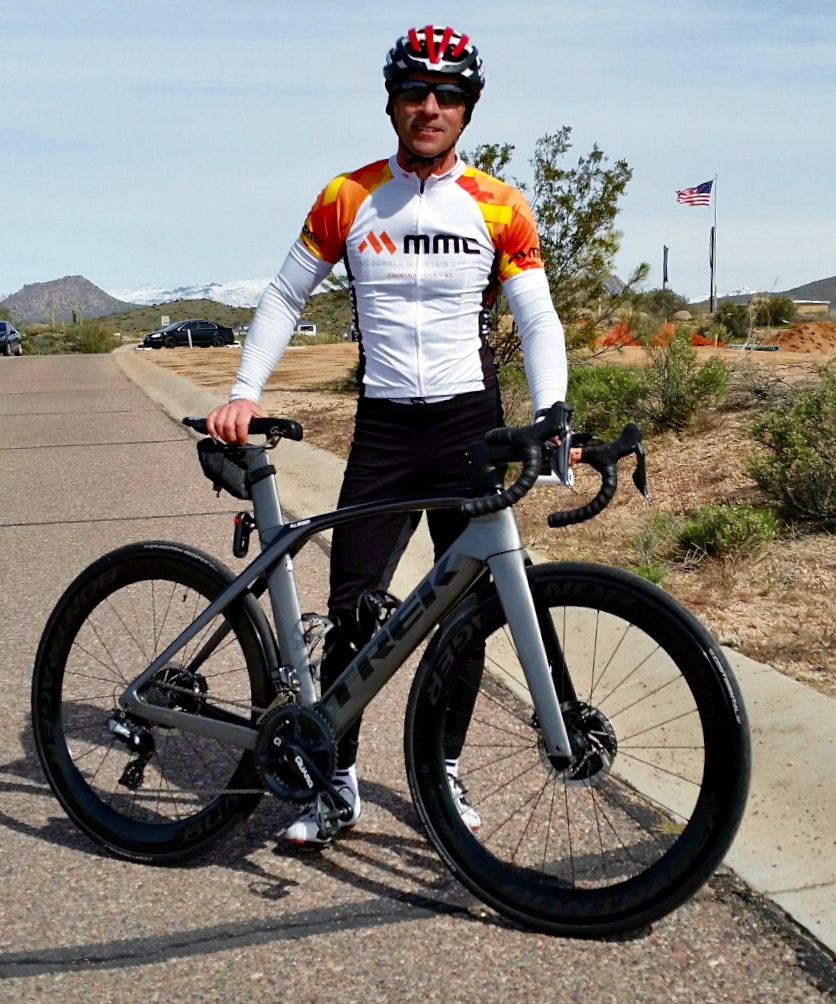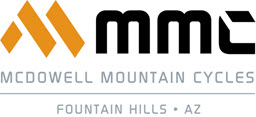
By Pete Armbruster, MMC Ambassador
Since aero road bikes were first introduced, I’ve always wanted to ride one. I finally decided to take the plunge and started reading reviews of the Trek Madone, Cannondale System Six, Cervelo S5, and Canyon Aeroad CF SLX. These are all great bikes, but after reading a number of reviews I chose to go with the Trek Madone.
I had Ron Heide, of the Pedal Well Fit Studio, do a pre-buy fit to determine the correct size for frame, bars, stem, etc. and went with Trek’s Project One, rather than buy the “standard build” off-the-shelf. Project One or simply, P1, costs a bit more than a standard build, but allowed me to specify paint scheme/color, bar size, stem size, crank arms, cassette, wheels, and just about everything else, so the bike fits perfectly right out of the box. The cost of buying the standard build and changing out parts to make it fit worked out to be about the same cost or more than going with P1.
I’ve been riding the bike for about a month now, and I can tell you this bike is FAST. The aero frame and 60mm dish wheels really do cut through the wind more than I had anticipated. It looks and handles similar to a time trial bike. Its frame stiffness provides fast accelerations and it’s very responsive. I’m a lightweight rider, so controllingn the front end in gusty crosswinds with the 60mm deep dish wheels took some getting used to.
This is my first road bike with Disc brakes and I love being able to carry more speed into a turn and brake later than I would with rim brakes. Being able to brake so rapidly is awesome. I also really like the Madone’s full internal cable routing, and the iso speed coupler makes the ride noticeably more comfortable. It comes with a new two-piece handlebar and stem (as opposed to an integrated stem-bar on most aero rode bikes) so changing out stems is less costly.
The cockpit supports Trek’s Blendr system for mounting bike computers and lights which further cleans up the front end. I am hooked on the Garmin Varia radar, but no mount exists yet for the back, so I modified a Wahoo stem-mount. It works great.
My bike weighed in at 18.9 lbs with a 54cm frame, Disc brakes, Di2, a 300 gram Cobb saddle, Quarq power meter, pedals and bottle cages. That’s a bit heavier than the Trek Emonda I’ve been riding, which is 14.2 lbs. The Madone certainly screams on the flats and descents, but I was a bit concerned about using it for climbing due to its weight. Conventional wisdom states you can’t have all the aero shaping and the weight of a climbing bike. However, that concern proved to be unjustified after riding a number of hills, including a ride down and back out of Bartlett Lake, which includes a couple of long 5-7% grade climbs. When compared to the Emonda, I can feel the weight penalty when climbing steeper grades, like riding up Golden Eagle’s 18% grade, but every uphill has a downhill, and the Madone dominates on the descent.
I’ve been riding a Trek Emonda for the last 2 years and love it, so I’d naturally want to compare the two bikes. However, it’s really hard to compare the Madone to the Emonda, since they target different markets and are different animals. The Madone is built for speed, while the Emonda is super lightweight and build for climbing. Both make great everyday road bikes, capable of going just about anywhere. That being said, the only logical choice for me is to follow the n+1 principal and keep them both.
Bottom line: If you want a fast bike with all-day comfort, the Trek Madone would be a great choice.
